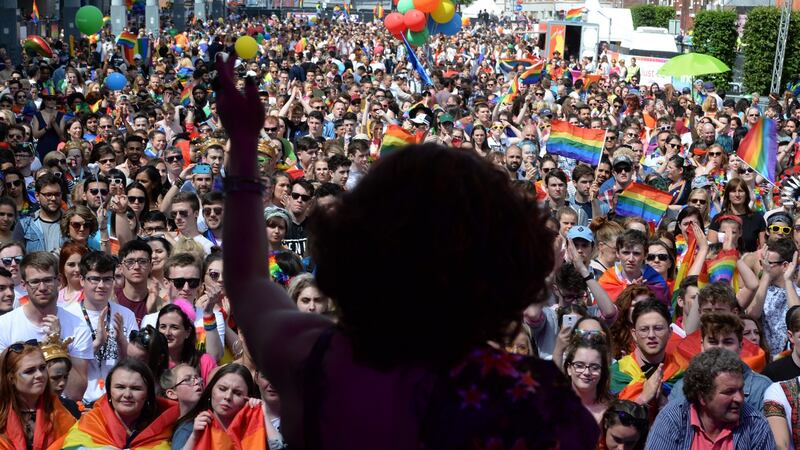Belfast Pride was one of just five parades that drew a protest during this year's marching season in Northern Ireland.
The most peaceful marching season in recent history contrasts sharply with the mid-1990s, when parade disputes routinely sparked violence, particularly in 1996, when 6,000 rubber bullets were fired during a single week.
According to figures obtained by Belfast-based investigative journalism outlet The Detail, 3,368 parades took place during the height of the marching season between April and August. Only 145 parades (less than 5 per cent) were deemed "sensitive" by the Parades Commission, while 131 marches (less than 4 per cent) had restrictions placed on them.
The five parades which attracted protests (just 0.15 per cent of the total) included two categorised as Catholic/Nationalist/Republican, two listed as being from the Protestant/Unionist/Loyalist community, and August’s Gay Pride parade. Pride is one of the biggest annual events in Belfast city centre and was the subject of a small picket by a religious group.
The legislation requires a wide range of events to notify the Parades Commission. Almost one third of the 3,368 processions were classified as being from neither tradition, including charitable events, vintage car rallies and the Belfast marathon.
During the five month period, there were over 25 times more Protestant/Unionist/Loyalist parades than Catholic/Nationalist/Republican marches reflecting the much greater importance the parading tradition holds within the unionist community.
The Parades Commission replaced the police as the decision-making body for marches after disputes over parades became the focus of large scale rioting and multiple murders in the summers of the 1990s, when the Garvaghy Road in Portadown and the Lower Ormeau area of Belfast became major flashpoints.
The commission said the parading environment in Northern Ireland during 2017 was “increasingly stable” and trends during the year have been “largely positive”.

Improved dramatically
“The obvious indicators were the lack of public disorder at parades and the low level of parade related protests”. The protests that did occur “largely related to interface areas in Belfast, and a number of rural towns with longstanding unresolved disputes.”
The Parades Commission figures showed that out of the 145 parades considered to be sensitive, 61 began their outward routes in Belfast, 26 started in Portadown, Co Armagh, nine started in Castlederg, Co Tyrone, and seven began in Rasharkin, Co Antrim.
A former SDLP politician who was prominent at the height of the Portadown dispute, Bríd Rodgers, told The Detail things had improved dramatically because "a lot of people on both sides came to the conclusion that common sense was required . . . People sat down and discussed it."
She said the Parades Commission had “done a very good job. It has made decisions that, at times, have not pleased everyone.”
Such success could show accommodation is possible at Stormont, where political leaders are deadlocked over issues including the Irish language, marriage equality and dealing with the legacy of the Troubles, she said.
“I think what is required actually at the moment is courageous leadership on both sides . . . That did happen in the run up to the Good Friday Agreement, it did happen, I presume, in the settlement of the Ardoyne dispute and that’s what needs to happen now.”
The Grand Secretary of the Orange Order Rev Mervyn Gibson acknowledged there was "less tension on the streets this year than in previous years and it was definitely a better 12th July all around".
"What the figures that The Detail has gathered don't necessarily reflect, however, is the reality of the mood on the ground," he said.
“They don’t show that the legislation in place to deal with parading in Northern Ireland is inherently flawed. There aren’t problems with parades, the problems lie with people getting offended by parades ... The reason we are seeing a relatively small number of protests is because the Parades Commission is doing the protestors’ job for them.”
The Commission acknowledged there is always a risk that high level political tensions can fuel frictions at street level, which become expressed via parades.
“Fluctuations in community relationships may impact upon parades . . . There is a sustained effort in some areas to maintain communications between organisers and interested parties, including at times political or local community representatives. This effort fell away during the flag protests but has recovered in the last couple of years.”









